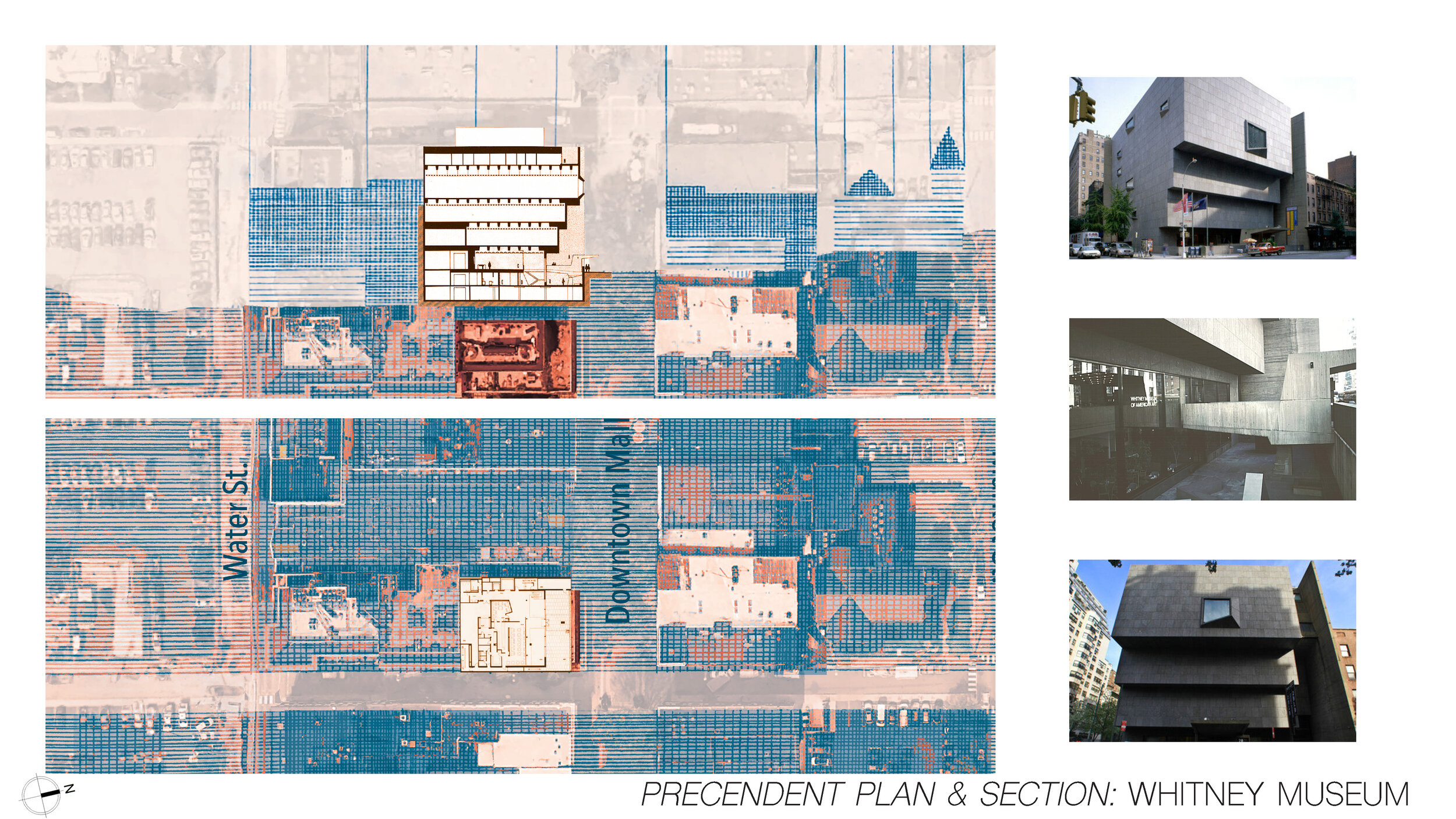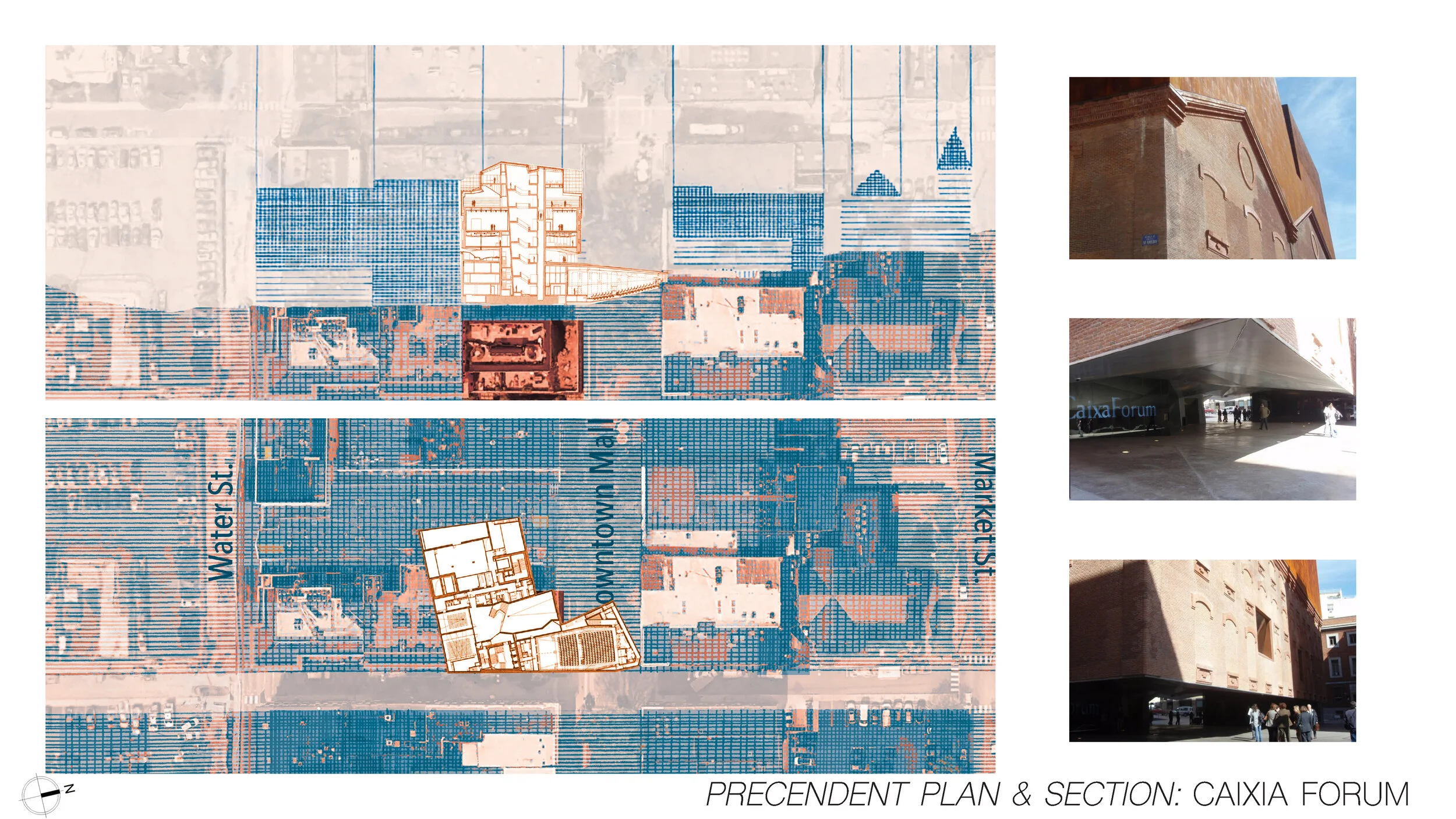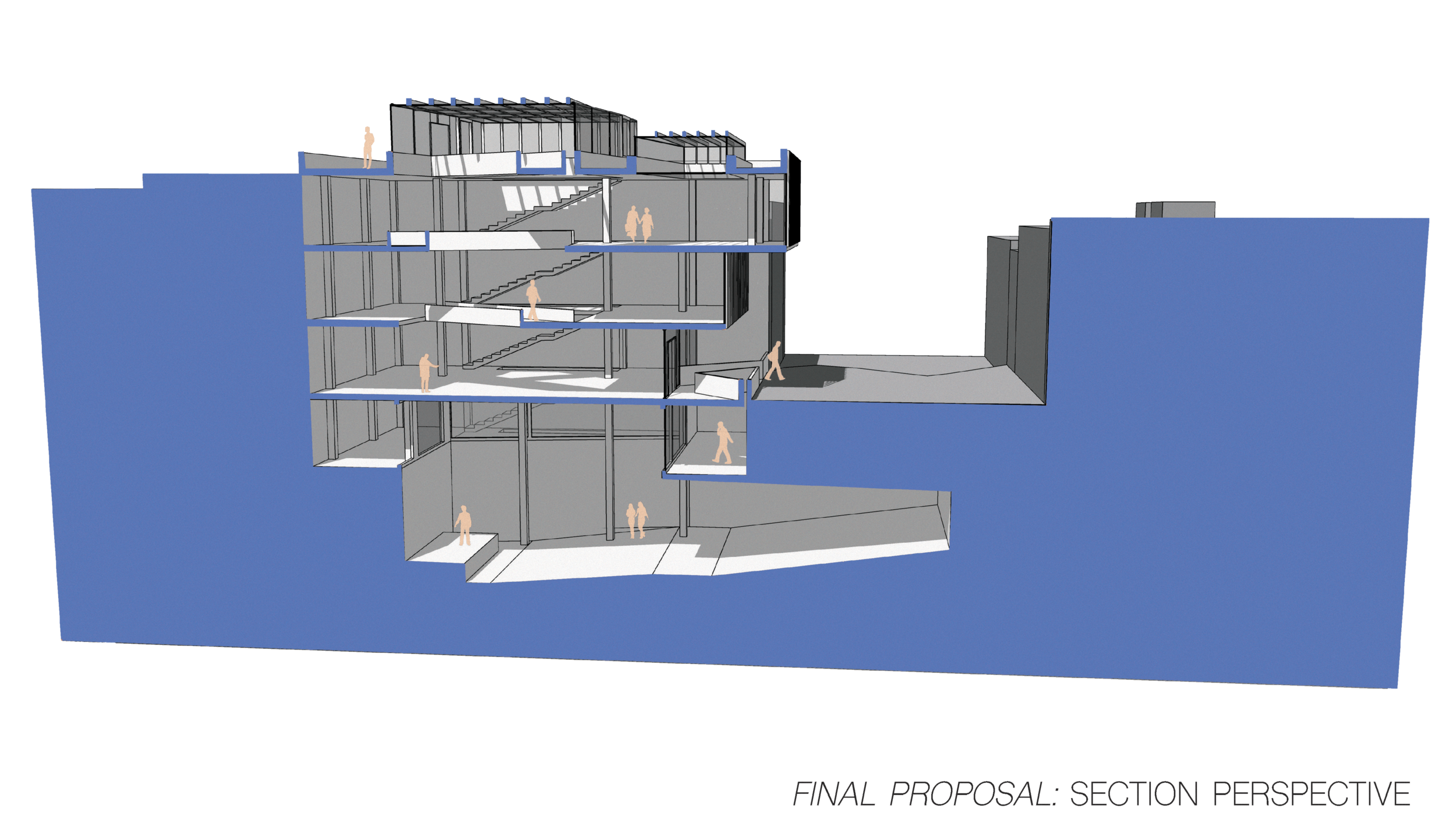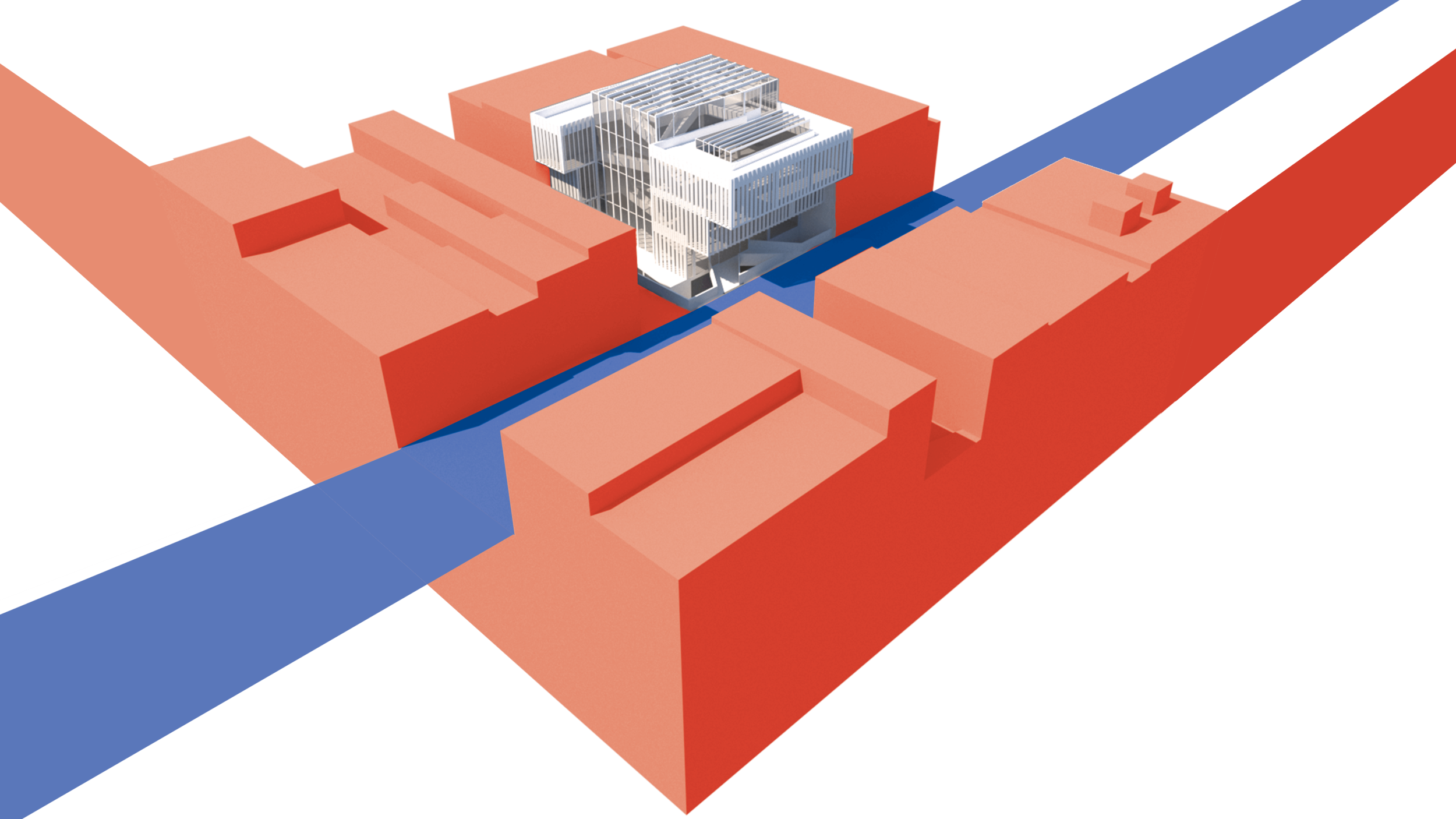
Charlottesville Center for Public Life
Located on a corner site in the outdoor Downtown Mall of Charlottesville, VA the Center for Public Life seeks to break the boundaries of how we address public and private spaces. This site holds a deep history of racial segregation that is still seen in the Charlottesville’s racial topography that clearly divides Black neighborhoods from the rest of downtown. A few streets down from the center is the site where, in 2017, a white supremacist drove through a crowd peacefully protesting; murdering Heather Heyer and injuring many others. In addition to Charlottesville’s grim history, the Downtown Mall that was constructed to bring in people and business seemed to be closed off and failing. During site analysis, specifically looking at the relationship of what was public and private it was clear that the mall was not successfully integrating all parts of the community - a problem it shared with Charlottesville as a whole.
‘Thick’ sections and plans were created by hand by layering information gathered on site and communicating what areas were publicly accessible or inaccessible. A defining trait of the downtown mall was a privatized section, only being publicly accessible on grade level (if you had the money to sit in a café). It was exclusionary and lacked areas for meeting by chance, areas where you may share a space with someone different from you living in the same community. The Center for Public Life came from studying three different precedents on how to handle large publicly accessible buildings. A stepped back facade allows the center to meet the street lighter than flat planes that surround it. The scheme encourages visitors to congregate as well as circulate up through all levels including the roof that houses a community garden.









